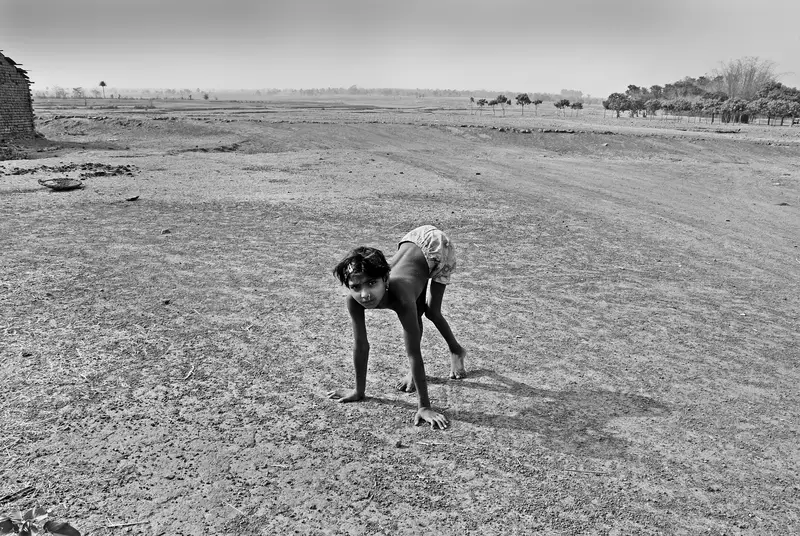Remember when your grandparents talked about children in iron lungs? That terrifying image might not stay in the history books much longer. In 2022, the United States reported its first case of polio in nearly 30 years in Rockland County, New York. This shocking discovery has health officials on high alert. Polio, a disease many thought was a thing of the past, is making an unwelcome comeback in communities where vaccination rates have dropped. And doctors across the country are worried that what was once nearly eliminated could once again become a serious threat to our children.
What exactly is polio and why should we worry
Polio is a highly infectious disease caused by the poliovirus that primarily affects children under five years old. Most people might not even know they have it since they’ll only experience mild symptoms like fever, sore throat, headache, or nausea – similar to having a cold. But that’s what makes it so dangerous. While you’re feeling just a little under the weather, you could be spreading the virus to others through your poop or even droplets from a cough or sneeze. And unlike many illnesses where you take medicine and get better, polio has no cure.
In its worst form, polio attacks the nervous system and can cause permanent paralysis within hours. Imagine not being able to move your legs or arms ever again from a preventable illness. In some cases, polio paralyzes the muscles needed for breathing, which can be fatal without help from machines like the infamous iron lungs of the past. The devastating history of polio epidemics shows why doctors today are so concerned about its return. When a disease this serious makes even a small comeback, medical professionals have good reason to sound the alarm.
How polio spread returns after decades of control
You might wonder how a disease that was eliminated in the United States and the Americas back in 1994 could suddenly reappear. The answer lies in what experts call “vaccine-derived poliovirus” or VDPV. In countries still using the oral polio vaccine (the kind given as drops in your mouth), the weakened live virus in the vaccine can sometimes mutate and regain its ability to cause disease. This can happen in areas where not enough people are vaccinated, giving the virus time and opportunity to change. Someone infected with this mutated virus can then bring it to other countries when they travel.
The case discovered in New York in 2022 was exactly this type – a vaccine-derived poliovirus type 2. What’s scary is that for this one diagnosed case, health officials estimate there could be hundreds of others infected who don’t show symptoms but can still spread the virus. Further testing found the virus in wastewater samples from several New York counties, confirming it was circulating silently in the community. Low vaccination rates in certain neighborhoods created the perfect conditions for polio to gain a foothold again. When vaccination rates drop below 95%, we lose what doctors call “herd immunity” – the protection that keeps diseases from spreading widely through communities.
Why vaccination rates are dropping in some areas
Several factors have contributed to declining vaccination rates in parts of the United States and around the world. The COVID-19 pandemic disrupted routine healthcare visits, causing many parents to delay or miss their children’s regular shots. But even before the pandemic, vaccine hesitancy was growing. Some parents worry about vaccine side effects or have heard misinformation about vaccines causing other health problems. Others simply don’t think these diseases pose a real threat anymore since they’re rarely seen – creating a dangerous cycle where the very success of vaccines leads people to question their necessity.
In some communities, cultural or religious beliefs have led to pockets of unvaccinated children. The Rockland County case occurred in an area with vaccination rates as low as 60% in some neighborhoods, far below the 95% needed to prevent outbreaks. Trust in public health recommendations has also eroded in recent years. When parents hear conflicting information from different sources, they may choose to delay vaccination while they research more. Each unvaccinated child becomes a potential host for the virus if exposed, and with global travel, exposure is always possible. Someone carrying polio from another country could unknowingly bring it into any community where vaccination rates are low.
The different types of polio vaccines and why it matters
Not all polio vaccines are created equal, and this difference plays an important role in the current situation. There are two main types: the oral polio vaccine (OPV) and the inactivated polio vaccine (IPV). The United States and most developed countries switched to using only the IPV in 2000, which is given as a shot. This vaccine contains killed virus that cannot cause disease or spread to others. It’s extremely safe but has one drawback – it doesn’t prevent the intestinal infection as well as the oral version, meaning vaccinated people could still potentially carry and spread the virus even if they’re protected from getting sick themselves.
Many developing countries still use the OPV because it’s cheaper, easier to administer (no needles needed), and creates better intestinal immunity to block transmission. But since it contains weakened live virus, it can – in rare circumstances – mutate back to a form that causes disease. This happens when the virus circulates for a long time in populations with low immunization rates. These vaccine-derived viruses can cause outbreaks just like the wild poliovirus. The vaccine differences create a complex situation where global eradication efforts must balance the benefits and risks of each type. Until polio is completely eliminated worldwide, even countries using only IPV remain at risk of imported cases.
Signs your child might have polio to watch for
Recognizing polio can be challenging because the initial symptoms resemble many common childhood illnesses. About 3 out of 4 infected people won’t show any symptoms at all, which means they can spread the virus without knowing it. For those who do develop symptoms, they typically appear 7-10 days after infection and might include fever, sore throat, headache, stomach pain, and feeling tired or sick. Your child might seem to have a regular cold or stomach bug. Some children experience stiffness in the neck and back, which parents might mistake for other conditions or injuries from playing too hard.
The most concerning symptoms develop when the virus attacks the nervous system, which happens in about 1 out of every 200 infections. Watch for sudden weakness or a feeling of pins and needles in the arms or legs. Some children may lose reflexes or have trouble walking normally. In severe cases, there may be difficulty breathing or swallowing. If your child has been exposed to someone with polio or has traveled to an area with known cases, any unexplained weakness or paralysis warrants immediate medical attention. Because the paralysis from polio is often permanent, early identification and supportive care are crucial for managing complications and preventing further spread of the virus.
How the disease spreads and who’s most at risk
Polio spreads primarily through what doctors call the “fecal-oral route” – which is a polite way of saying that tiny particles of poop from an infected person end up in someone else’s mouth. This typically happens through contaminated water or food, or from hands that haven’t been washed properly after using the bathroom. The virus can also spread through respiratory droplets from coughs and sneezes, though this is less common. A single infected person can spread the virus to hundreds of others before anyone shows symptoms, making it incredibly contagious in settings with close contact like schools, daycare centers, or crowded housing.
While anyone not vaccinated against polio is at risk, some groups face higher dangers. Children under five years old make up the largest group of polio victims because their immune systems are still developing. Pregnant women are also at increased risk of severe disease if infected. Perhaps the most vulnerable are people with compromised immune systems who may not develop full protection even if vaccinated. Communities with low overall vaccination rates become breeding grounds for outbreaks because there aren’t enough immune people to stop transmission. Even in countries with generally high vaccination coverage, isolated communities with vaccination rates below 80-85% can experience outbreaks if the virus is introduced.
Global hot spots where polio is still spreading
While most countries have eliminated polio, several regions continue to battle active transmission. Pakistan and Afghanistan remain the only two countries where wild poliovirus has never been fully eliminated. Both countries saw a concerning increase in cases during 2024, with Pakistan reporting 74 cases and Afghanistan jumping from 6 cases in 2023 to 24 in 2024. Political instability and conflict have severely hampered vaccination efforts in these areas. In Afghanistan, the Taliban has banned door-to-door vaccination campaigns and restricted women from working in health programs, making it nearly impossible to reach many children. In Pakistan, distrust of vaccination programs grew after the U.S. government used a fake vaccination campaign to gather intelligence in the hunt for Osama bin Laden.
Beyond these two countries, outbreaks of vaccine-derived poliovirus continue to occur across parts of Africa, the Middle East, and Asia. Between January 2023 and June 2024, health officials detected 74 different outbreaks across 39 countries, primarily in Africa. Many of these outbreaks spread internationally because of low vaccination coverage and delayed response campaigns. Even more concerning for Americans is the discovery of poliovirus in wastewater samples from cities across the United States, not just in New York. This silent circulation means the virus could be present in many communities without anyone showing symptoms yet. The global connections of our modern world mean that outbreaks anywhere pose a potential risk to unvaccinated people everywhere.
How to protect your family from this disease
The most effective protection against polio is vaccination. The current recommended schedule in the United States includes four doses of the inactivated polio vaccine (IPV) for children: at 2 months, 4 months, 6-18 months, and a booster at 4-6 years of age. If you’re unsure whether your child is up to date, contact their doctor to check their immunization records. Almost all children (99 out of 100) who receive all recommended doses will be protected from polio. For adults who were vaccinated as children but are traveling to high-risk areas, a one-time booster may be recommended. If you never received the full series of shots as a child, you should complete the series now, regardless of your age.
Beyond vaccination, good hygiene practices offer additional protection. Regular handwashing with soap and water, especially after using the bathroom, changing diapers, and before preparing or eating food, helps prevent the spread of many diseases including polio. When traveling to countries where polio is active, be cautious about water and food safety. Drink only bottled or properly treated water and eat thoroughly cooked foods. If you’re planning international travel with children, check with your doctor about six weeks before departure to ensure vaccinations are complete and up to date. For families living in communities where cases have been detected, following public health guidelines is crucial, which may include additional vaccination recommendations.
The reappearance of polio in the United States after decades of absence serves as a stark reminder that progress against deadly diseases can be reversed when we let our guard down. What was once nearly consigned to history books now threatens to return if vaccination rates continue to decline. The good news is that we already have the tools to stop polio – safe, effective vaccines that have protected generations of children. By ensuring our families stay up to date with recommended vaccinations and supporting global eradication efforts, we can help keep this deadly disease where it belongs – in the past.

